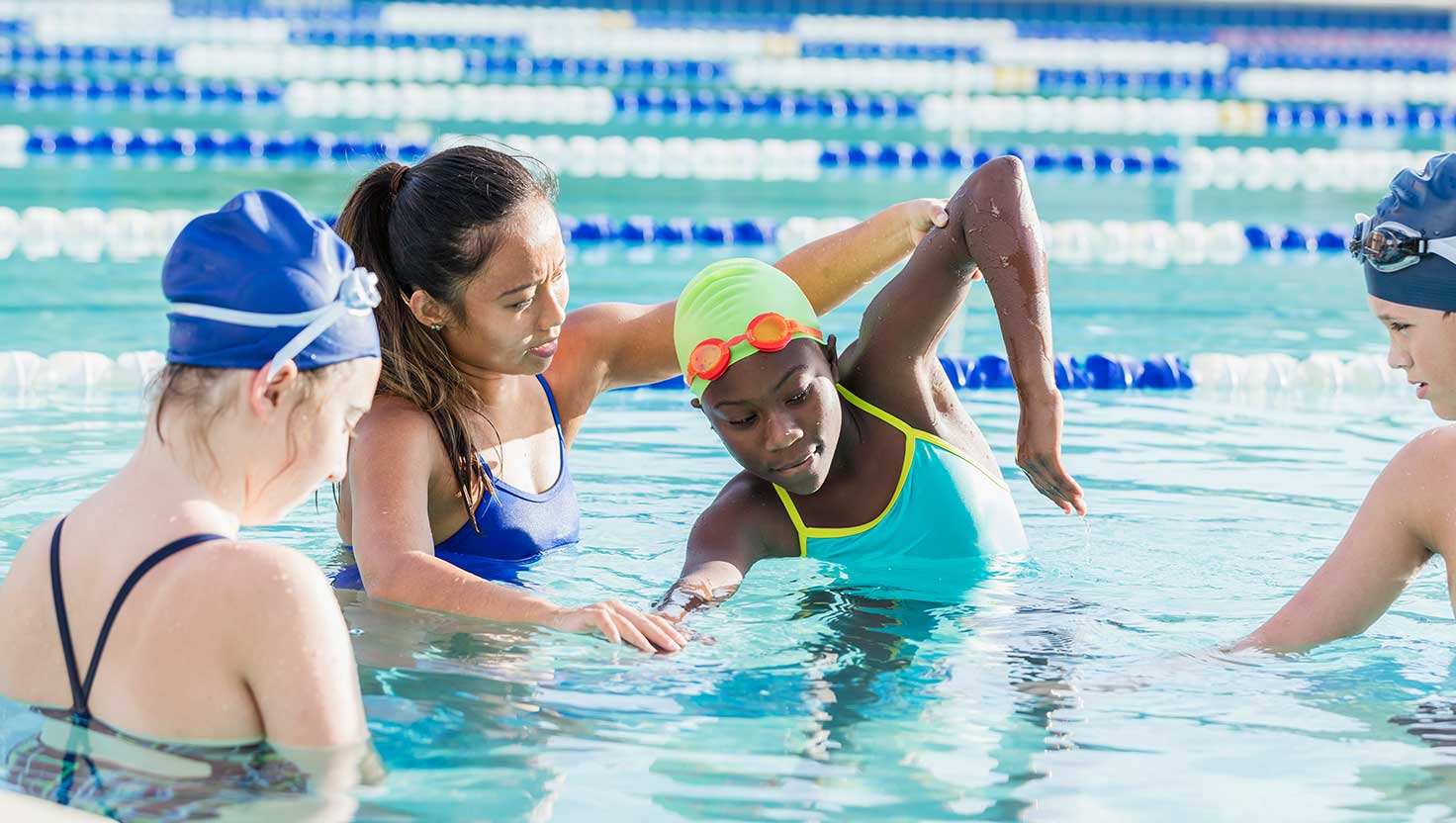WASHINGTON, D.C. -- This Sunday marks the first World Drowning Prevention Day, which draws attention to strategies for preventing the world's third-leading cause of unintentional-injury deaths. According to the World Health Organization (WHO), drowning accounts for an estimated 236,000 deaths each year around the world.
Although drowning rates are highest among children between the ages of 1 and 4, learning to swim is one strategy that older generations can also use to limit their water-hazard-related risks. In 2019, the Lloyd's Register Foundation World Risk Poll, based on over 150,000 interviews by Gallup in 142 countries and areas, found that a majority of people aged 15 and older -- 55% -- said they cannot swim unassisted.
| Yes | No | |
|---|---|---|
| % | % | |
| World | 44 | 55 |
| Low-income economies | 27 | 72 |
| Lower-middle income economies | 38 | 61 |
| Upper-middle income economies | 37 | 62 |
| High-income economies | 76 | 24 |
| Lloyd's Register Foundation World Risk Poll, 2019 | ||
Low- and middle-income countries account for almost all -- more than 90% of -- unintentional drowning deaths, according to the WHO, with most drownings taking place in the Pacific and Southeast Asia regions.
These are also many of the same areas where people are most likely to say they can't swim without assistance. More than seven in 10 adults (72%) living in low-income countries said they are unable to swim unassisted. But the numbers do not look much better in lower-middle-income countries (61%) and upper-middle-income countries (62%).
The picture changes only in high-income countries, where 24% of adults say they cannot swim unassisted, while about three in four -- 76% -- say they can swim.
Only One in Three Women Worldwide Can Swim; Two in Three Cannot
While the majority of people worldwide cannot swim, women account for most of them. Almost six in 10 men (57%) say they can swim, but only one in three women (32%) say they can.
There are enormous gender gaps on this question in countries at all income levels, including the high-income group, in which the most people report being able to swim unassisted. However, less than a majority of men (39%) and women (15%) in the low-income group say they can swim; this is the only income group of countries where that is the case.
This gender gap is present in most regions of the world, although it is much narrower in high-income regions, including Northern and Western Europe and Australia and New Zealand.

Horizontal bar graph. The percentages of men and women around the globe who are capable of swimming unassisted around the globe, by region, in 2019. Globally, 57% of men and 32% of women are able to swim unassisted.
Regionally, the gap is widest in Central Asia, where 48 percentage points separate the 79% of men and 31% of women who said they were able to swim without assistance. This is followed by the 38-point gap in Latin America and the Caribbean, between the 71% of men and 33% of women who are able to swim.
Across higher-income regions, the gender gap is much smaller. The smallest gap is in Northern and Western Europe, where there is a four-point difference between the 89% of men and 85% of women who report being able to swim unassisted. Roughly the same gap exists in Australia and New Zealand, where 90% of men and 85% of women say the same.
Bottom Line
A number of factors may contribute to one's risk of drowning, including the amount of time spent on the water and residing in flood-prone areas. In general, men are more than twice as likely as women to die from drowning. But the WHO cites studies that this may be related to men being more exposed to water than women are, and their higher likelihood to swim alone, as well as to drink alcohol before swimming and boating.
Still, one of the key factors is likely the ability to swim, which much of the world lacks. For policymakers, educators and community leaders in countries worldwide, and particularly in regions where populations have low levels of ability to swim, drawing attention to the risk may serve as a wake-up call. Although people who can swim can still drown (for example, because of the state of the water or medical conditions), many people drown because they can't swim.
Therefore, implementing programs that teach people -- particularly women and girls -- how to swim from a young age may equip individuals with a necessary skill that could save lives.
To stay up to date with the latest Gallup News insights and updates, follow us on Twitter.
Learn more about the Lloyd's Register Foundation World Risk Poll.




